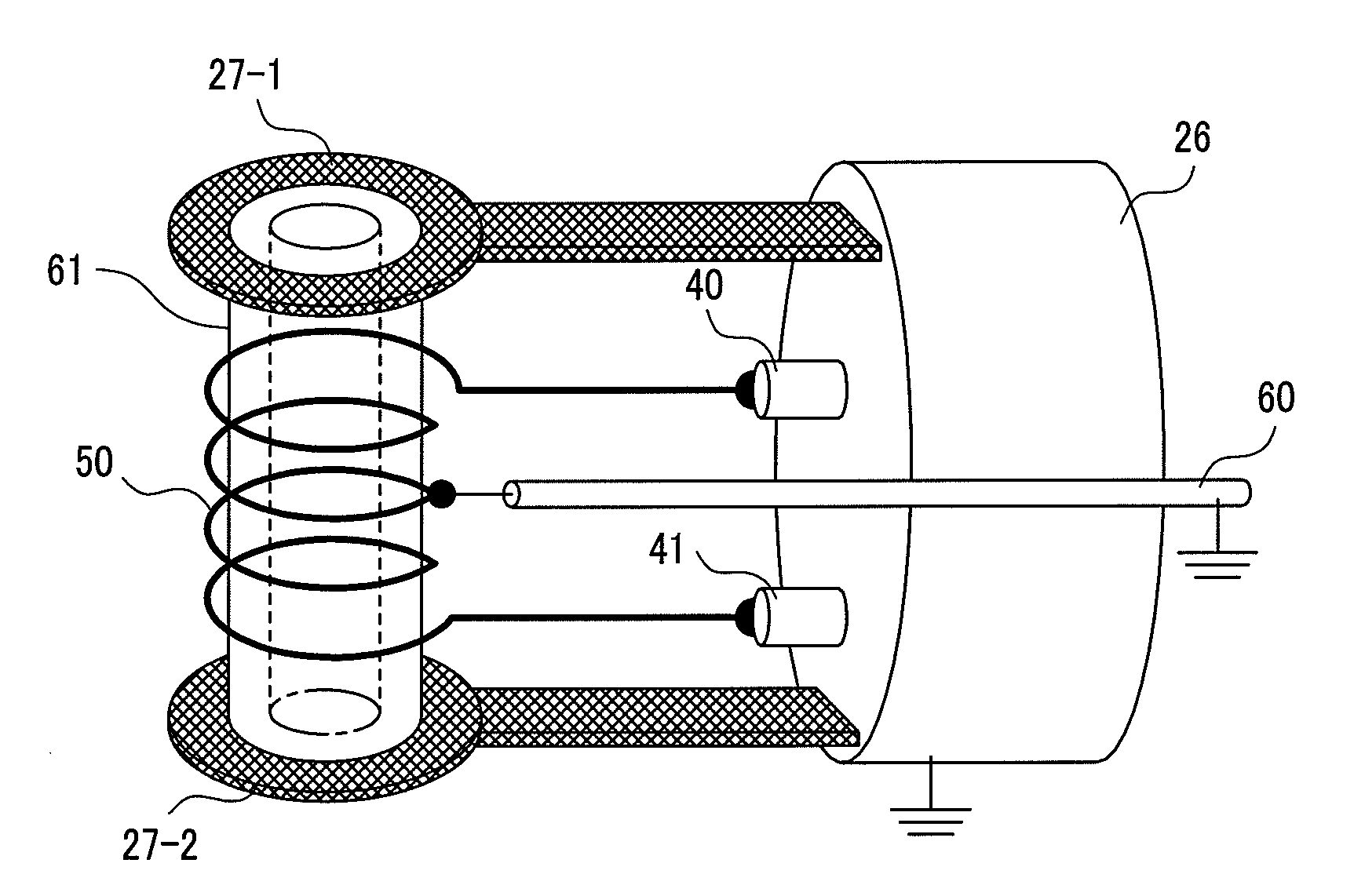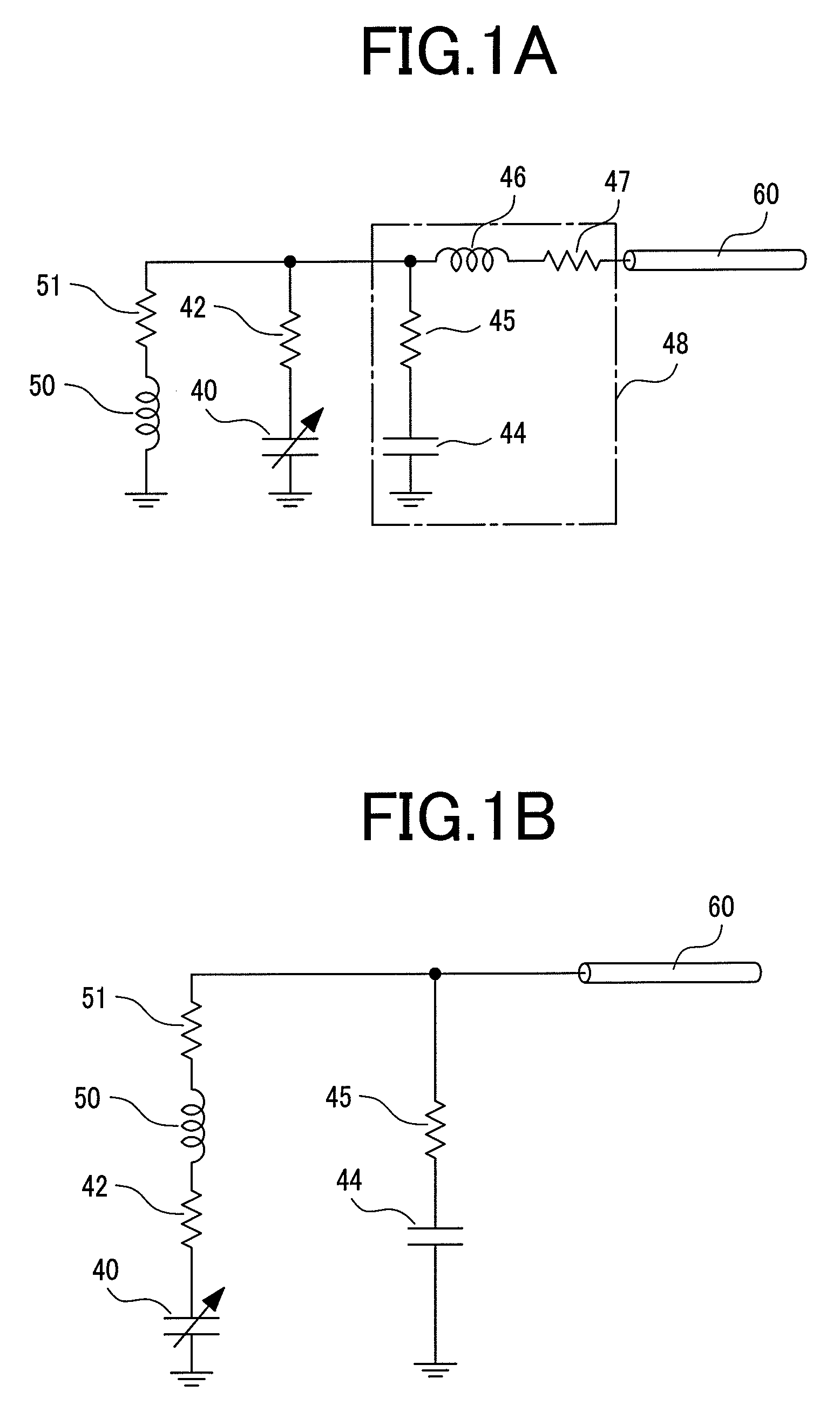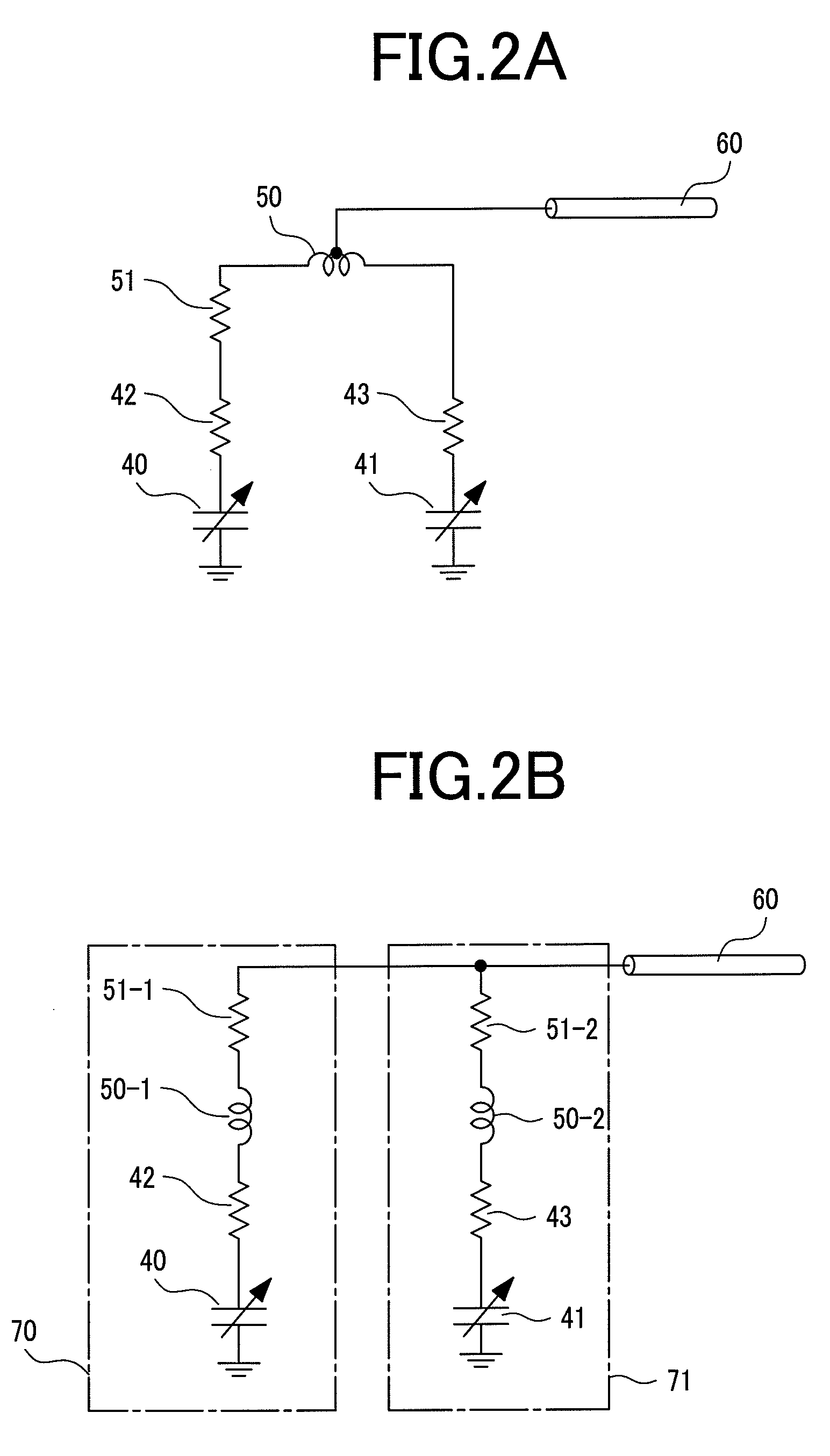Nmr probe and nmr spectrometer
a spectrometer and nmr technology, applied in the field of nuclear magnetic resonance probes, can solve the problems of increasing the resistance the difficulty of obtaining the intrinsic high q factor of the antenna having low loss, and the increase of the resistive loss of the whole antenna circuit, so as to achieve small resistive loss, increase the number of turns of the antenna coil, and high sensitivity
- Summary
- Abstract
- Description
- Claims
- Application Information
AI Technical Summary
Benefits of technology
Problems solved by technology
Method used
Image
Examples
embodiment 1
[0046]FIG. 5 is a perspective view showing an outline of main components of an NMR spectroscopy and their arrangement. A uniform magnetic field is produced along a centerline indicated by one-dot-chain line by superconducting magnets 10-1 and 10-2 divided into two. The produced magnetic field is indicated by an arrow B0. A sample tube 30 stores a sample 31 therein and is inserted from the direction (X-axis direction in the Figure) perpendicular to the static magnetic field. A cryogenic probe 20 having mounted thereto a solenoid-shaped probe antenna 25 for detecting a signal from the sample 31 is inserted from the direction same as the static magnetic field. The cryogenic probe 20 is composed of a probe antenna 25, a heat exchanger 22 at a leading end of a cryocooler serving as a cryogenic source, a leading-end stage 26 of the probe cooled by the heat exchanger, and a probe housing 23 that joint these components.
[0047]FIG. 6A is a schematic view showing an electrical connection of th...
embodiment 2
[0053]The embodiment 2 proposes an antenna using a superconducting thin film. The shape of the antenna is a solenoid type similar to that in the embodiment 1. FIG. 8A schematically shows the structure of the probe antenna in the embodiment 2. The antenna coil in the embodiment 2 is composed of superconducting thin film coils 81-1, 81-2, 81-3, and 81-4 formed on substrates 80-1, 80-2, 80-3, and 80-4, and normal metal tapes 82-1, 82-2, 82-3, 82-4, and 82-5 which electrically connect the coils. The signal line 60 is connected to the normal metal tape 82-3 that connects the second and third superconducting thin film coils. The capacitors 40 and 41 are connected to the normal metal tapes 82-1 and 82-5 serving as the end portions of the antenna coil.
[0054]FIG. 8B is a perspective view schematically showing the manner of mounting the solenoid-shaped probe antenna to a cryogenic probe 20. The substrates 80-1, 80-2, 80-3, and 80-4 having the superconducting thin film coils 81-1, 81-2, 81-3, ...
embodiment 3
[0061]The embodiment 3 proposes a solenoid-shaped antenna to which a superconducting thin film is applied like the embodiment 2. FIG. 9 is a perspective view schematically showing the structure of the probe antenna according to the embodiment 3. The basic structure of the probe antenna is the same as that in the embodiment 1. In the embodiment 3, the antenna coil is composed of a superconducting thin film 81 patterned onto the cylindrical bobbin 61 and normal metal tapes 82-1 and 82-2.
[0062]A method of manufacturing the probe antenna will be explained below. Firstly, an MgB2 superconducting thin film having a thickness of 300 nm is formed by a vapor deposition on the cylindrical bobbin 61 made of sapphire (Al2O3). Then, the formed superconducting thin film is mechanically grinded to form a helical pattern of the superconducting thin film having a width of 1 mm on the cylindrical bobbin 61. Thereafter, the normal metal tapes 82-1, 82-2, and 82-3 are connected to the generally middle ...
PUM
 Login to View More
Login to View More Abstract
Description
Claims
Application Information
 Login to View More
Login to View More - R&D
- Intellectual Property
- Life Sciences
- Materials
- Tech Scout
- Unparalleled Data Quality
- Higher Quality Content
- 60% Fewer Hallucinations
Browse by: Latest US Patents, China's latest patents, Technical Efficacy Thesaurus, Application Domain, Technology Topic, Popular Technical Reports.
© 2025 PatSnap. All rights reserved.Legal|Privacy policy|Modern Slavery Act Transparency Statement|Sitemap|About US| Contact US: help@patsnap.com



